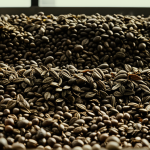The Historical Roots of British Pies
British pies trace back to medieval times, where the origin of British pies lay in practical and culinary needs. Early pies were simple enclosures of meat and other fillings in thick pastry, designed to preserve food and make it portable. This was crucial during a period without refrigeration and limited preservation methods.
The history of British pies reflects a blend of necessity and evolving tastes. Initially, pies served more as containers for cooking and storing meat; the pastry, often called the “coffin,” was sometimes discarded. Over time, this evolved into a valued part of the dish, with refinements in pastry technique and variety in fillings.
In the same genre : What are the key techniques for making a mouthwatering toad in the hole?
The culinary history UK shows a progression from these humble beginnings to intricate recipes featured in noble households, often including spices and multiple layers. Societal changes and increased access to diverse ingredients influenced recipes, leading to the rich tradition of British pies we recognize today. This evolution from simple meat enclosures to celebrated dishes underscores their enduring presence in British cuisine.
The Historical Roots of British Pies
Building on the origin of British pies in medieval times, early British pies emerged primarily for practical and culinary reasons. Without refrigeration, pies served as durable containers to preserve and transport meat and other fillings, often encased in thick pastry. This practical need shaped the history of British pies, where the crust was initially valued more for preservation than taste—often discarded after baking.
Also read : What are the origins of traditional UK cooking techniques?
Medieval influences from Roman and Norman culinary traditions introduced spices and varied fillings, enriching the British pie recipe. Over centuries, the culinary history UK reveals a shift as pies became more than just utility food. Recipes evolved from simple meat enclosures to complex dishes with layered fillings and refined pastry, reflecting increased access to diverse ingredients and changing tastes.
This evolution signified a blending of necessity and culinary artistry. In noble households, pies incorporated spices and elaborate presentation, marking them as symbols of status as well as sustenance. Thus, the pie’s development mirrors shifts in British society, from rural practicality to celebrated cuisine, embedding pies deeply in British culinary identity and history.
The Historical Roots of British Pies
British pies first appeared as practical food solutions during medieval times. The origin of British pies is tied closely to their ability to enclose meat and other fillings in a durable pastry, essential for preserving food in an era without refrigeration. This dual purpose—preservation and portability—defined early pie-making techniques.
What role did medieval influences play in shaping pies? The history of British pies shows that Roman and Norman culinary practices introduced spices and more sophisticated fillings, enriching recipes beyond simple meat enclosures. This marked the start of an evolution where pies became culinary expressions rather than mere containers.
How did pies evolve in British cooking? Over time, the culinary history UK reveals a transition from rustic, thick-crusted pies often discarded after baking to delicacies with refined pastry and layered fillings. This transformation reflects broader social changes, increased ingredient availability, and a growing appreciation for pies as both sustenance and artful cuisine.
Thus, British pies embody a rich balance between practical needs and evolving tastes, deeply rooted in the UK’s culinary history.
The Historical Roots of British Pies
Pies in British cuisine first rose from practical and culinary reasons during medieval times, driven by the need to preserve meat and other ingredients. The origin of British pies lies in their durable pastry crust, which acted as a protective “coffin” to keep fillings fresh before refrigeration.
What defined the history of British pies in those early periods? Medieval influences introduced spices and new cooking techniques that began transforming pies beyond simple meat containers. Roman and Norman culinary traditions enriched recipes with varied fillings, enhancing flavour and complexity.
How did these early pies evolve? The culinary history UK reveals a gradual transition from basic, thick pastry meant primarily for preservation to finer, more palatable crusts that became integral to the eating experience. Over centuries, pies adopted layered fillings and spice blends, reflecting growing access to diverse ingredients and changing social tastes.
This evolution highlights the balance between functionality and flavour in British pies, illustrating their journey from humble, practical beginnings to celebrated components of British culinary heritage. The melding of necessity and sophistication shaped the identity of pies within the UK’s evolving food culture.
The Historical Roots of British Pies
British pies first appeared in medieval times, grounded in the origin of British pies that prioritized practicality alongside flavor. Why did pies rise to prominence historically? The history of British pies shows they were essential for preserving meat and other ingredients in durable pastry cases before refrigeration existed. This practical use shaped early recipes.
How did medieval influences affect these pies? The culinary history UK reveals Romans and Normans introduced spices and new fillings, moving pies beyond simple meat enclosures. This enrichment marked a key evolution in pie-making, blending function with developing taste preferences.
What about the transformation to more complex recipes? Initially, the crust—once called a “coffin”—served purely as a container, often discarded. Over centuries, the history of British pies demonstrates a shift toward thinner, tastier pastry and more elaborate fillings. This evolution reflected social changes and broader access to diverse ingredients, making pies a celebrated part of British food culture.
Thus, British pies embody the culinary history UK as a story of adaptation—from medieval utility foods to refined dishes balancing preservation and flavour. Their development provides a window into Britain’s changing tastes and cooking traditions.







